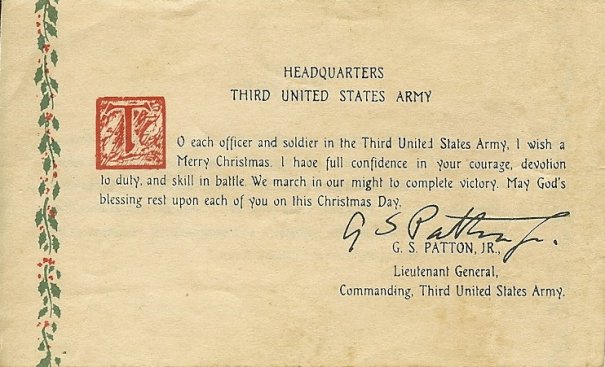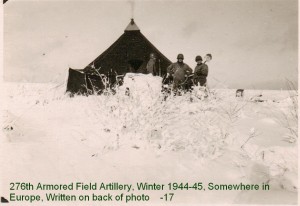The 30th Infantry Division’s record in World War II garnered them the title of “Workhorse of the Western Front” by the Allies and “Roosevelt’s SS” by the German high command. Since the “SS” were Germany’s most elite troops, this reference by the enemy was high praise. The 30th’s nickname “Old Hickory,” in honor of Andrew Jackson, and their distinctive patch originated during their service in World War One where they fought with distinction. Since the division was originally created from National Guard units and since I am from Tennessee, I’ll focus my comments on the 117th Regiment made up of the Tennessee National Guard.
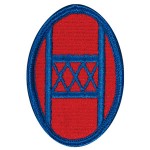
The unit history of Company B of the 117th Regiment, based in Athens, Tennessee, provides an interesting insight into the men who made up the Tennesseans in the 117th Regiment of “Old Hickory.” These were men who grew up together, some were related and many had fathers or uncles who had served in the 30th Division during WWI. In 1938 Company B had an authorized strength of three officers and sixty-one enlisted men. Federalization came in September 1940 and the strength increased to five officers and one hundred men. There were eight groups of brothers on Company B’s roster at that time.
Originally authorized for one year under Federal control, world unrest led to an extension. When the Japanese attacked Pearl Harbor in December, 1941, the National Guard remained part of the U.S. Army for “the duration.” Under federalization enlistees, draftees and officers transferred from other divisions diversified “Old Hickory” with men from all over the country.
In September, 1940, the 30th Infantry began three and a half years of training, preparing for the fight everyone knew would eventually come. During this time many of the 30th’s officers and non-coms were transferred to other divisions as cadre (experienced soldiers responsible for turning new recruits into battle-ready soldiers). All of Company B’s original five officers were sent to officers training and reassigned to other divisions. In addition twenty-two of the company’s enlisted men were trained as officers and reassigned. These reassignments spread the influence of this small company of Tennessee National Guardsmen throughout the Army.
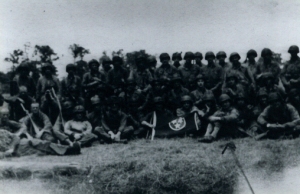 The 117th Regiment arrived in England in February, 1944, along with the rest of the 30th Infantry Division and its support units. They landed in France on Omaha Beach in mid-June. Although they came under enemy artillery fire in their assembly area, Company B’s first real combat came in early July, 1944, with the crossing of the Vire River. They fought through the hedgerows of Normandy learning the essentials of live combat that could not be taught in training. Due to casualties four different officers commanded Company B 117th Regiment in the nine day period July 7-16. On July 20th St. Lo was taken and the Allies took this opportunity to “break out” of the small area they held along the Normandy Coast.
The 117th Regiment arrived in England in February, 1944, along with the rest of the 30th Infantry Division and its support units. They landed in France on Omaha Beach in mid-June. Although they came under enemy artillery fire in their assembly area, Company B’s first real combat came in early July, 1944, with the crossing of the Vire River. They fought through the hedgerows of Normandy learning the essentials of live combat that could not be taught in training. Due to casualties four different officers commanded Company B 117th Regiment in the nine day period July 7-16. On July 20th St. Lo was taken and the Allies took this opportunity to “break out” of the small area they held along the Normandy Coast.
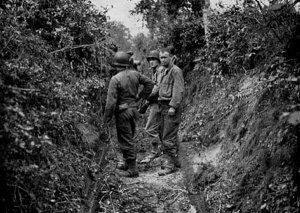
On July 24, 1944, three divisions, the 30th, 4th and 9th, comprised “Operation Cobra.” The 30th lined up its regiments for the attack – the 119th and 120th Regiments and two battalions of the 117th, with the remainder of the 117th held in reserve. The massive bombing by the Army Air Force preceding the infantry’s attack went badly. Bombs fell short and landed on the 30th, causing 152 casualties. Command stopped the main body of bombers and delayed the attack for a day. On the next day the Army Air Force made the same disastrous mistake, bombing short and causing 662 more casualties for the 30th. That day the operation proceeded with the remnants of the 30th plus reserves attacking in their sector as planned. Despite heavy casualties from “friendly fire,” the remaining men of “Old Hickory” pulled together and did their job. Although the Germans survived the bombing with little damage, the American attack was successful. By the end of July the Allied armies had “broken out” of their limited foothold on French soil and had opened a narrow corridor along Normandy’s western coast allowing Patton’s Third Army tanks to pour into the interior.
In the three weeks from the crossing of the Vire to the capture of Tessy-sur-Vire, the 30th Infantry Division suffered the most casualties of their entire combat experience in WWII. Other more famous battles lay ahead for the division but none would be as deadly. After the fight for Tessy-sur-Vire, the 30th rested for a few days. Replacements arrived but not near enough to make up for the men who had been lost.
On August 6th, orders came for “Old Hickory” to take over 1st Division positions in and around Mortain so the 1st could pursue the Germans further south. The American lines faced the German-held territory to the east with the 30th’s position around Mortain on the southern end. Beyond Mortain small, mobile Americans units chased the Germans further inland.
A short distance to the west of the 30th’s position was Avranches and the narrow corridor supplying the Third Army and elements of the First Army pushing further into France. Unknown to the Allies, the Germans were massing forces for a counter-attack. They saw their chance to cut off Patton’s army by attacking west to the coast at Avranches, cutting the American supply lines, and thus bottling up Patton in Brittany and restricting the rest of the Allies to Normandy. The German plan could have worked – if the 30th Infantry Division hadn’t stood in their way, blocking key roads and holding the only high point in the area.
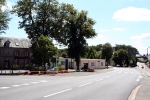
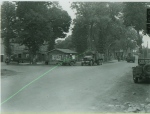
The 117th Regiment took up positions around St. Barthelemy just north of Mortain. They set up road blocks using anti-tank guns, established their headquarters, and occupied positions vacated by the 1st Division. No tanks were available. German aircraft attacked before the 117th could settle in, followed by heavy artillery bombardment. Early on August 7 the tanks of the 1st SS Adolf Hitler Division encountered the road blocks and knocked out the anti-tank guns, but not before some of their tanks and other mobile equipment were destroyed. The 1st Battalion of the 117th took the brunt of the attack. Although the Americans scattered and sought shelter, they did not withdraw. Without tank support, the infantry men used bazookas, machine guns, mortars and rifles to fight off the German onslaught and blocked one of the main routes to the coast. With limited communication with each other or their headquarters, small units fought ferociously. A squadron of British Typhoons provided the only effective air support by flying low and destroying German tanks, troops and vehicles. Read a fascinating account from the RAF at http://www.oldhickory30th.com/RAFatMortain.htm.
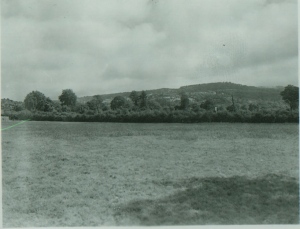
Meanwhile, the 2nd Battalion of the 120th Regiment occupied Hill 314 (named for its height) which overlooked the plain east and south of Mortain. Surrounded by the Germans, artillery Forward Observers called in fire almost continuously and men fought hand-to-hand as the Germans repeatedly attempted to take the hill. Isolated and low on supplies, the Americans held out on the hill for six days without reinforcement or resupply.
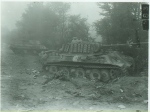
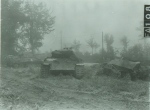 The 117th stopped the German advance in the area around St. Barthelemy, an action for which they received a Presidential Citation. The 119th defended the road through Juvigny and the ridge road through Le Mesnil-Adiele which represented the deepest German penetration toward the sea, while the 120th clung to the high ground on Hill 314.
The 117th stopped the German advance in the area around St. Barthelemy, an action for which they received a Presidential Citation. The 119th defended the road through Juvigny and the ridge road through Le Mesnil-Adiele which represented the deepest German penetration toward the sea, while the 120th clung to the high ground on Hill 314.
By August 12th the German offensive lost steam and they pulled back. The 30th drew a deep breath of relief as reinforcements rolled in. But there would be no rest. With only a day to regroup and receive replacements, “Old Hickory” pushed eastward chasing the withdrawing Germans.
After the war the importance of the battle surrounding Mortain became clear. Surviving German commanders cited the loss at Mortain as critical to holding France and defeating the Allies. The German counter-offensive was their last chance to stop the invasion. Afterwards their focus became the defense of their homeland.
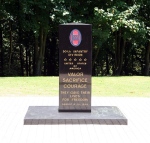
The exciting story of the 117th Regiment 30th Infantry Division continued on until the final German surrender. In my next post I will continue to discuss the 30th and their exploits after Mortain.

